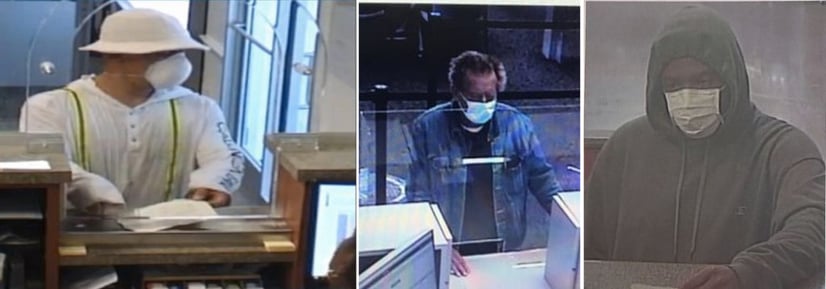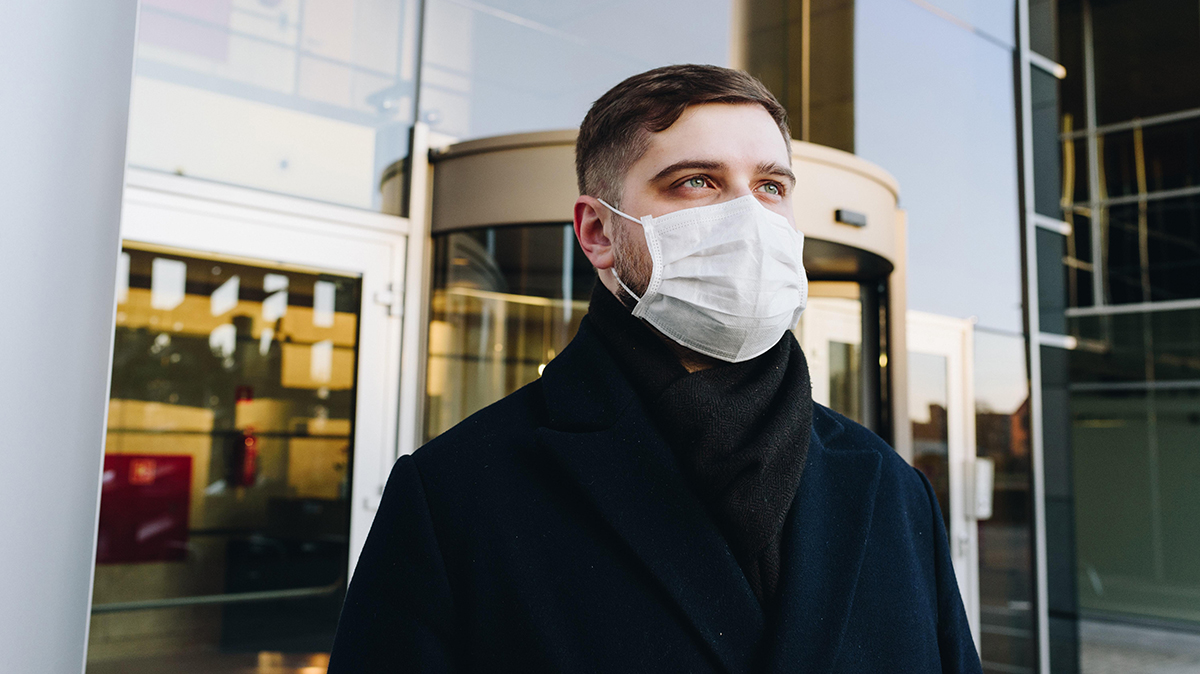In early June, the U.S. Treasury’s Office of the Comptroller of the Currency sent a letter to mayors across the U.S. with some startling implications for bank security measures:
“Potentially permanent requirements that individuals wear face masks in many or even all public spaces create the very real risk of increases in bank robberies,” wrote Acting Comptroller of the Currency Brian P. Brooks. “Historically, banks had policies prohibiting customers from wearing masks and certain head coverings in branches for this reason. Many banks relaxed these prohibitions temporarily during the height of the COVID-19 crisis out of concern for the health and welfare of their customers. While that may have been a prudent decision when the extent of the health risk was still unknown, recent reports of face-covering-related robberies at bank branches and other establishments make clear that broadly applicable face mask requirements are not safe or sustainable on a permanent basis.”
Some commentators dismissed this warning as “deeply unhelpful” or alarmist. But local law enforcement tends to disagree. Speaking to the AP Wire in May, Frackville (PA) Police Chief Richard Bell explained, “Criminals, they’re smart and this is a perfect opportunity for them to conceal themselves and blend right in.” His region of Pennsylvania had already seen seven armed robberies that relied on the new normal of universal masking to conceal both the identity of criminals and their intent to do harm.
Once Suspicious, Now Omnipresent
Traditionally, masks have been a dicey proposition for criminals. While a mask concealed a criminal’s identity during the crime, it also created suspicion. As one counter worker told the AP Wire, “Before, I would have called the police because having a mask wasn’t normal. Now it’s normal. It’s scary because you can’t tell who is safe and who’s not.” Richard Hunt, president of the Consumer Bankers Association, agreed: “Wearing a mask at any businesses, especially a bank, just a few months ago would have raised a lot of eyebrows.”
As a result, criminals had to carefully time their mask use, pulling it on at the last minute (often after entering the targeted establishment), and removing it as quickly as possible after the crime. This timing created a vital set of opportunities for the attacker to be spotted and recorded by countless security cameras or bystanders. Such pictures, in most cases, proved key to capturing armed robbers.
Things are different now. According to Chicago Police Department Chief of Detectives Brendan Deenihan, “Guys are like, ‘OK, I have to wear a mask, the police are not going to stop me on the way to a crime and back from a crime wearing a mask.’ Now if you are going to commit a crime you can leave your house with a mask on and drive for an hour.”
Bank robberies had been on the decline for decades. The American Bankers Association says bank robberies are now at a 30-year low. There are fewer than 3,000 annually. They’ve also become less profitable and among the serious crimes most often resulting in an arrest.
But the most recent statistics on bank robberies are from 2018—prior to the pandemic. The impact of universal masking on bank security measures—and whether it is a curiosity or a growing trend—is as of yet unknown.
Download our ‘How-To Guide’ for Banks on Bulletproof Barriers
How Will Crime Trends During the Pandemic Affect Bank Security Measures?
Attackers blending in by wearing masks have robbed banks in New Jersey and California. A serial bank robber in Georgia hit six banks from behind his mask and is still at large.

Bank robbers across the U.S. using coronavirus masks to subvert bank security measures
In mid-July, a man walked into a Houston bank wearing a black bandanna over his face and handed the teller a note explaining that he hadn’t received a COVID-19 relief loan or grant from the Small Business Association, and thus lost his business. Alarmingly, that note concluded: “I don’t wanna hurt nobody but will if I have to. Any suspicious moves and I will start shooting so please go get my money. Don’t make anything noticeable!”
All of these bank robbers are still at large.
On July 6, a man walked into a Florida Wells Fargo branch wearing sunglasses, gloves, and a “duckbill”-style surgical/dust mask. According to authorities, this criminal had specifically planned to “[take] advantage of the COVID-19 protocols in wearing a mask to conceal his identity to commit crimes.” Comically, employees couldn’t understand him through his mask, and he stormed out without taking any money. The man authorities ultimately arrested, Keith Earle Young, is suspected of a similar robbery in June and has a history of bank robbery spanning back to 2005.
TAKE A LOOK: A stranger in a mask, sunglasses, & gloves, tried to rob the Wells Fargo bank near Bumby Ave. & Colonial Dr. around 10:00am. No injuries, no weapon was displayed. Same suspect could be linked to another incident. Info? Call @CrimelineFL 1-800-423-TIPS(8477). pic.twitter.com/PTnk8t1xTU
— Orlando Police (@OrlandoPolice) July 6, 2020
This phenomenon isn’t limited to banks. Countless convenience, liquor stores, and grocery stores have been similarly targeted. According to the AP Wire, COVID-masked bandits robbed the Aqueduct Racetrack in March. They overpowered three workers (two of whom were security guards) and escaped with a quarter-million dollars in cash. That’s more than 60 times more money than the average bank heist.
New Bank Security Measures
Jim Richards, CEO of Total Security Solutions, got his start improving bank security measures. He wishes he could offer a solid solution for these novel conditions. But this is an exceptionally tricky problem.
“Obviously, it’s a legitimate concern,” Jim says. In fact, early in the pandemic, TSS worked with financial institutions and other essential services to protect workers with new virus barriers. “The virus is highly contagious, and clearly not falling back on its own. It’s tough now, if everyone is wearing the same mask, to even differentiate who from who.”
But the solutions that he’d advise for other situations aren’t a consistently good fit for banks. For example, over the last several years schools have been converting entryways into “secure vestibules“. These allow school staff to vet visitors before permitting entry. This hasn’t traditionally included health checks, but it certainly will in many locales this fall. The hallmark of a good security solution is that it can reduce several entirely different risks with little alteration.
In a bank, visitors could be stopped in such a vestibule and asked to lower the mask and show ID. “That sounds great,” Jim notes, “but it’s hard to implement, because banks aren’t schools. Schools traditionally have one main entryway into a roomy hall or foyer. If the bank decides they want to add a buzz-through secure vestibule, they have to completely redesign the branches in many places. Most of them aren’t designed with a vestibule to begin with, so you are going to eat up lobby space to do that. And especially in cities, where rents are high per square foot, they don’t have the space to spare. This is one of those problems that, for the time being, we need to tackle on a case-by-case basis.”


